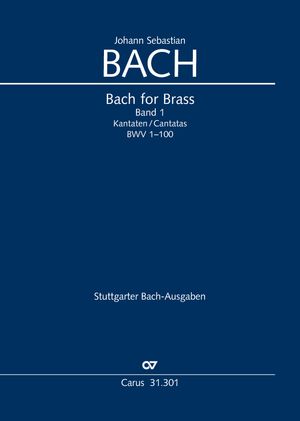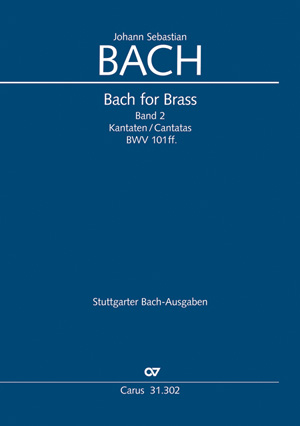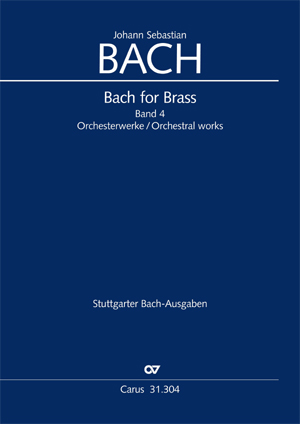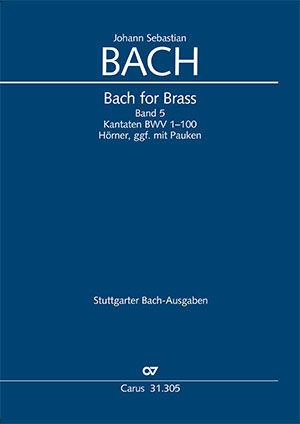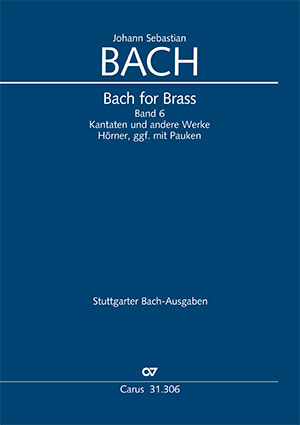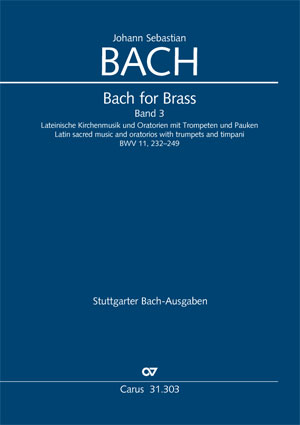
Bach for Brass 3
Latin Church Music and Oratories
Contents
-
Composer
Johann Sebastian Bach
| 1685-1750Johann Sebastian Bach is one of the most important composers of Western music history. He came from a widely ramified musical dynasty, which produced numerous musicians and organists in the Thuringian-Saxon area.
Bach vocal
Ever since Carus-Verlag was founded in 1972, publishing the music of Johann Sebastian Bach has been a special focus for us. In the 2017 Reformation anniversary year we completed the Bach vocal project. Bach's complete sacred vocal works are now available in modern Urtext editions, together with performance material. A complete edition of all the full scores is also available in a high quality box set. Personal details
-
Editor
Uwe Wolf
| 1961Uwe Wolf studied musicology, history, and historical ancillary science at Tübingen and Göttingen. After receiving his doctorate in 1991 he was a research assistant at the Johann-Sebastian-Bach-Institut in Göttingen. From 2004 he worked at the Bach-Archiv Leipzig. There he directed a both research departments, was substantially responsible for the redisigning of the Bach Museum, and he developed the digital Online-Projekt Bach. Since October 2011 he has been the Chief Editor at Carus-Verlag, Stuttgart. He has taught at various universities and also belongs to the editorial boards of several complete editions. Personal details
-
Editor
Edward H. Tarr
| 1936-2020
Reviews
Johann Sebastian Bach: Bach for Brass Vol 3
Bach for Brass, Band 3, lateinische Kirchenmusik und Oratorien
„Bach for Brass” stellt eine neue Ausgabe für Blechbläser sämtlicher Blechbläserpartien in sieben Heften von J.S. Bach dar. Band 3 enthält Trompeten- bzw. die Zinkenpartien, - ggf. mit Pauken - sämtlicher Messen und Oratorien. Die Herausgeber wollen dabei den Musikern zuverlässiges Material über „authentische” Interpretation Bach’scher Werke auf modernen und alten Instrumenten an die Hand geben. Dabei stehen die Bläserstimmen in Stimmenpartitur mit Pauken und sind mit Stichnoten, Taktzahlen und guten Wendestellen versehen. Die Vokal- und Themeneinsätze sind markiert mit der jeweiligen Unterlegung des gesungenen Textes. Sehr informativ sind auch die Informationen zu den Einzelwerken (zum Beispiel Originalität, Datierung, Fassungsproblematik, Quellen).
Quelle: Musica Sacra 6/2002, S. 48
Johann Sebastian Bach: Bach for Brass Vol 3
This is part of a series of 7 volumes containing the parts of all Bach’s music that includes brass and timpani, an improved successor to the various Musica Rara publications. This is based on the latest research, and includes same facsimiles of the parts Bach’s players used. Layout is sensible, and there are good, if concise, introductions to each work. lncluded here are the trumpet and timp parts of the B minor Mass, three Sanctuses, both versions of the Magnificat, the Christmas, Easter and Ascension oratorios and Bach’s instrumentation of Palestrina’s Missa sine nomine (though without the trombones). I can foresee players turning up to performances with better editions of their parts than those provided by the orchestra!
Quelle: Early Music Review April 2003
Frequent questions about this work
 There are no questions and answers available so far or you were unable to find an answer to your specific question about this work? Then click here and send your specific questions to our Customer Services!
There are no questions and answers available so far or you were unable to find an answer to your specific question about this work? Then click here and send your specific questions to our Customer Services!






